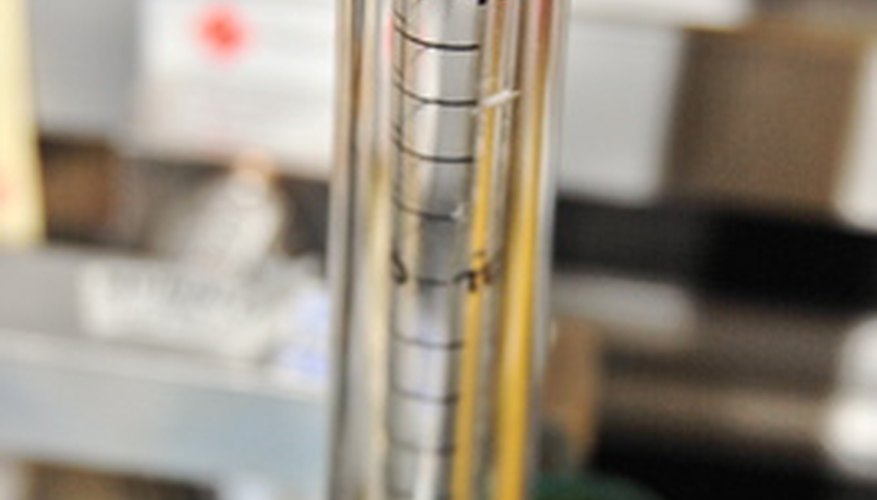The nasal cannula is the preferred method of oxygen delivery for neonates. A nasal cannula is a two-pronged device placed across the upper lip, so the hollow prongs extend inside the nasal cavity, and secured to the head behind the ears. It delivers warmed, humidified oxygen to the baby through a tube. This method has both advantages and disadvantages that should be considered carefully and discussed with your baby's physician.
Methods of Oxygen Delivery
There are three methods of oxygen delivery. The nasal cannula method delivers oxygen to the baby through the nasal cavity. The mask method delivers oxygen through both the nose and mouth via a mask that is secured to the baby's face by a string or cord attached to either side of the mask and wrapped around the back of the baby's head. The catheter method delivers oxygen through an implant in the trachea. This requires the puncturing of both the skin and trachea and can only been done by a licensed physician.
- There are three methods of oxygen delivery.
- The nasal cannula method delivers oxygen to the baby through the nasal cavity.
Advantages of the Nasal Cannula
The nasal cannula method helps by providing enough oxygen to keep the lungs inflated and also by delivering a higher concentration of oxygen to help keep the baby's body oxygenated. The nasal cannula is preferred for neonates over the mask delivery method because it is easier to keep in place and gives a more direct flow of oxygen to the baby. It can also be secured to the baby with a small piece of medical tape, whereas the mask, which can irritate the baby, is much more difficult to secure. The catheter method is considered the more evasive method of oxygen delivery, in that it requires the insertion of a catheter directly into the trachea and requires the baby to remain in the hospital for the duration of oxygen treatment. With the nasal cannula method, as long as the parent is properly instructed and follows the prescription, oxygen can be safely administered to the baby at home.
- The nasal cannula method helps by providing enough oxygen to keep the lungs inflated and also by delivering a higher concentration of oxygen to help keep the baby's body oxygenated.
- The catheter method is considered the more evasive method of oxygen delivery, in that it requires the insertion of a catheter directly into the trachea and requires the baby to remain in the hospital for the duration of oxygen treatment.
Disadvantages of the Nasal Cannula
When using the nasal cannula method of oxygen delivery, the patient runs the risk of perforation of the nasal septum--the creation of a hole or fissure in the membrane that divides the nostrils. This condition can either be asymptomatic or cause a great deal of pain and discomfort. Smaller perforations are characterised by a whistling noise, while larger perforations are accompanied with pain, blood discharge and difficulty breathing. A doctor can prescribe a cream to treat the hole, and symptoms usually clear up after a few months. However, in some cases, surgery is required. Bacterial contamination is also a concern and can lead to the spreading of pneumonia. For this reason, it is important that all equipment be cleaned before and after each use.
- When using the nasal cannula method of oxygen delivery, the patient runs the risk of perforation of the nasal septum--the creation of a hole or fissure in the membrane that divides the nostrils.
- A doctor can prescribe a cream to treat the hole, and symptoms usually clear up after a few months.
